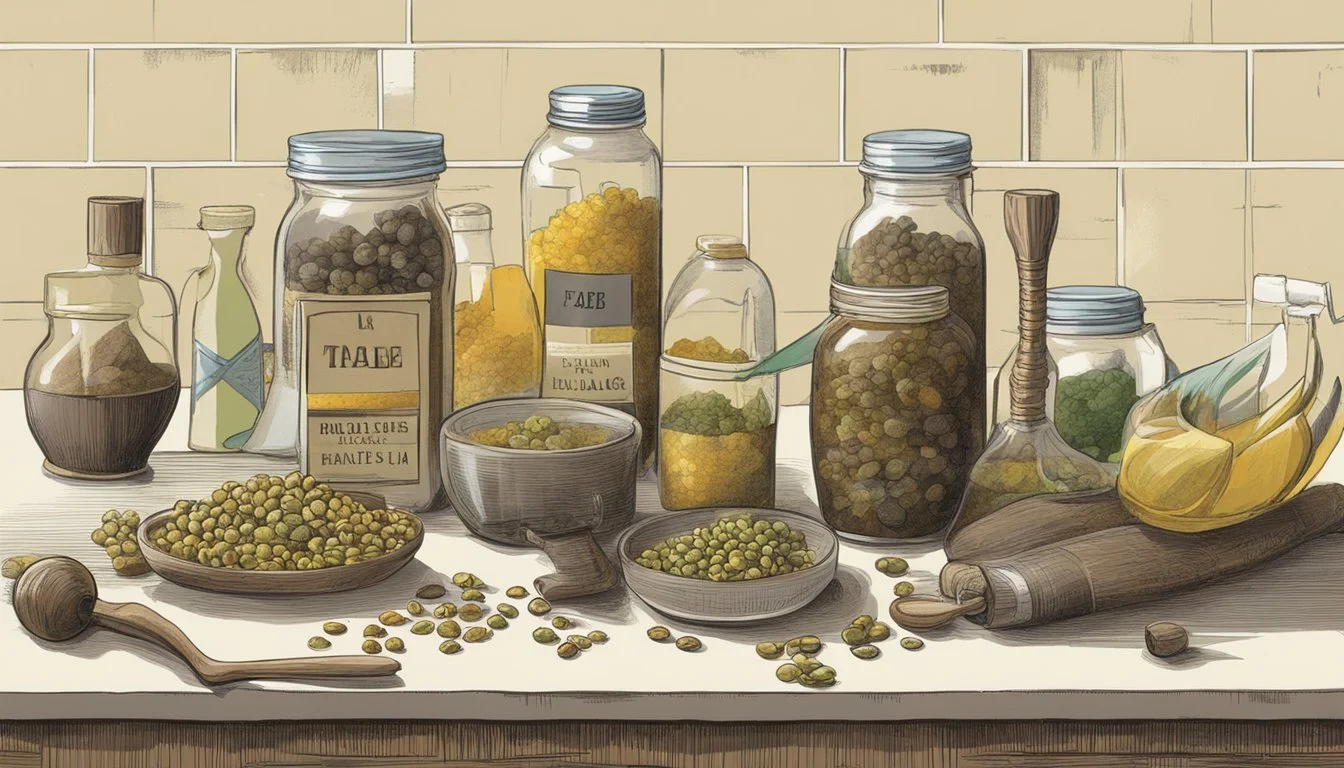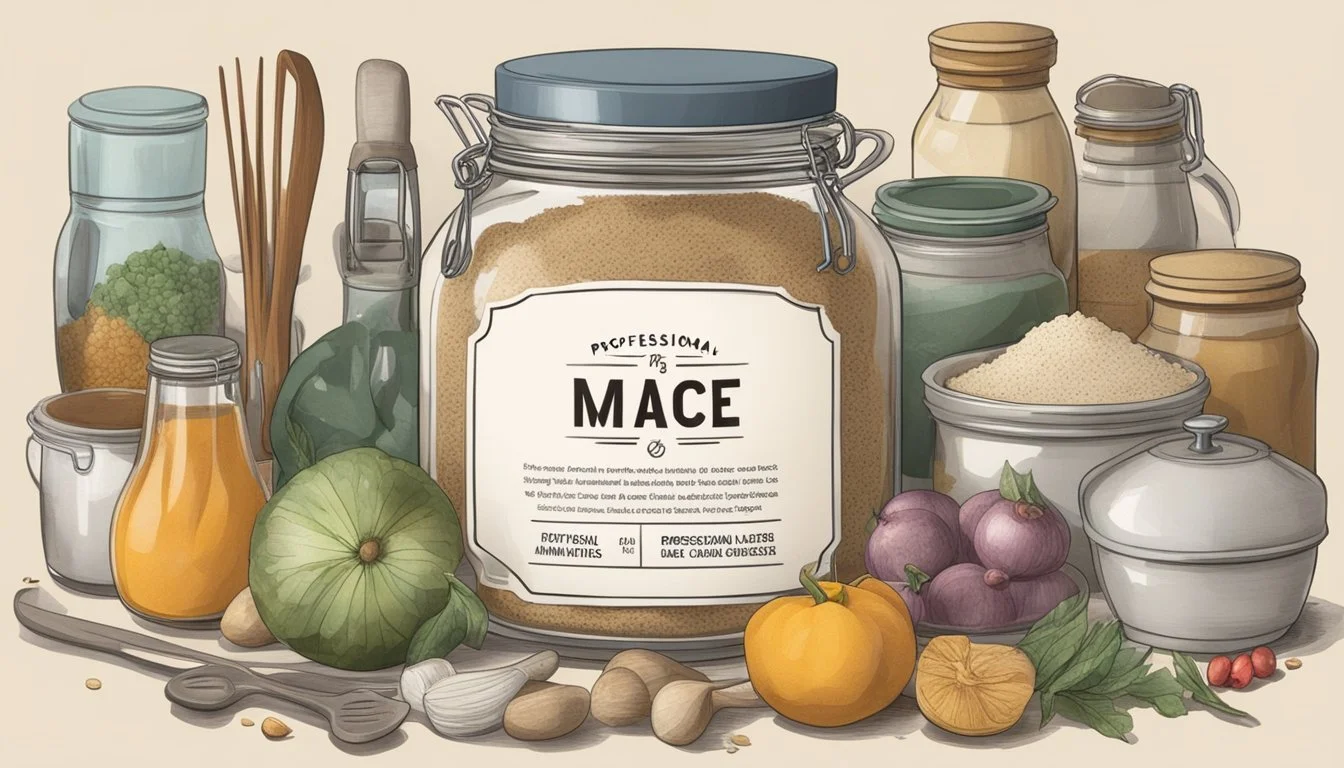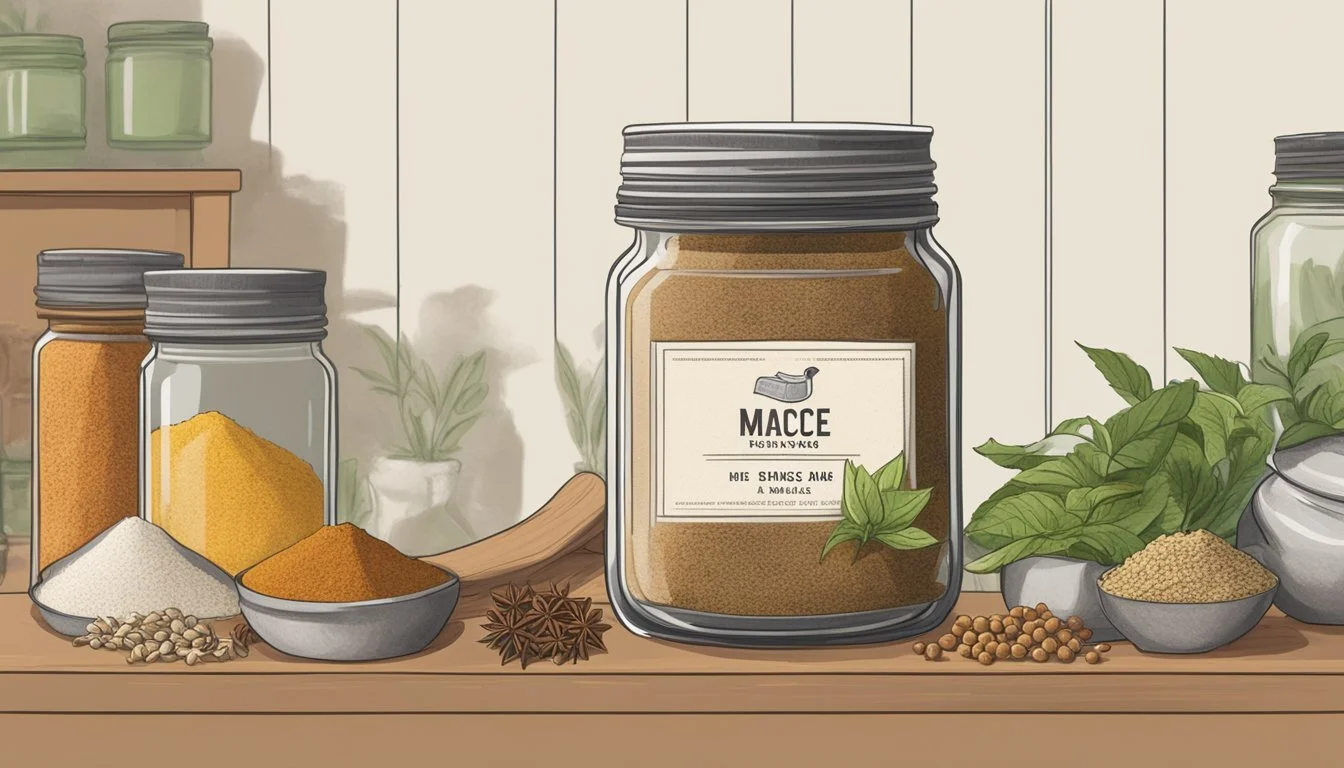Does Mace Go Bad? Understanding Spice Shelf Life
Mace, both as a self-defense spray and as a culinary spice, does have a shelf life. While it may not spoil in a traditional sense, its effectiveness diminishes over time. For culinary mace, proper storage can extend its vitality, but even under ideal conditions, it should be used within a few years for the best flavor and potency.
Ground mace, like many spices, is sensitive to light, heat, and moisture, which can accelerate its decline in quality. Whole mace tends to last longer than its ground counterpart, retaining its essential oils and flavors more effectively.
When it comes to self-defense mace, the expiration date indicates when the product might start losing its potency. Even if it doesn't spoil, its effectiveness can decrease, making it less reliable for personal protection. Proper storage and regular checks are key to ensuring that your mace is always ready when needed.
Understanding Mace
Mace is a versatile spice originating from the nutmeg tree, distinct for its unique flavor and aroma. Its uses span historical, culinary, and chemical domains, highlighting its significance and diverse applications.
Historical Context and Culinary Uses
Mace, derived from the aril of the nutmeg seed, has a rich history in global cuisines and traditional medicine. Originating in the Banda Islands of Indonesia, it was a prized commodity in the spice trade. Cooks use mace in various dishes to impart a warm, aromatic flavor that is subtler than nutmeg.
In savory dishes, mace complements soups, sauces, and meat dishes. It’s also prevalent in baking, enhancing the flavors of cakes, cookies, and desserts. Its versatility makes it a staple in both Eastern and Western culinary traditions.
Mace vs. Nutmeg: Origins from the Nutmeg Tree
Mace and nutmeg both come from the same tree, Myristica fragrans. The nutmeg seed, when harvested, is surrounded by a bright red or orange aril, which is the mace. This aril is dried and sold as whole blades or ground into powder.
While nutmeg has a slightly sweeter and warmer profile, mace delivers a more intense and spicier aroma. The two spices are often interchangeable, but mace’s distinct properties make it preferable for certain recipes, especially where a stronger, savory punch is desired.
Chemical Composition: Oils and Active Ingredients
Mace contains essential oils and active ingredients that contribute to its distinctive flavor and aromatic properties. The primary oils found in mace include myristicin, elemicin, eugenol, and safrole. These oils are responsible for its warm and pungent aroma.
Oleoresin capsicum, a natural oil, and capsaicin, an active component, are not found in mace, but these terms help understand spice in general. The chemical composition of mace plays a significant role in its effectiveness as a preservative and in medicinal applications, where its potent oils are harnessed for various therapeutic purposes. Using mace in cooking ensures dishes are infused with its characteristic rich and complex flavor.
Determining Mace Quality and Potency
Ensuring mace retains its quality and potency depends on the freshness, storage conditions, and proper testing. Learn how to evaluate these aspects to determine if your mace remains effective for culinary or defensive uses.
Indicators of Freshness and Aroma
Fresh mace is recognizable by its vibrant color and strong, distinctive aroma. The smell should be pungent and somewhat sweet. If the fragrance has faded or smells musty, the mace is likely old. Visually, fresh mace has a bright orange-red hue, whereas old mace may appear dull or brown.
Texture also plays a crucial role; fresh mace should be flexible and not brittle. When ground, it should retain a rich, sharp smell. These sensory checks are essential for assessing the best quality.
Factors Affecting Potency Over Time
Several variables influence mace's potency. Whole mace generally retains its strength for up to four years, while ground mace has a shorter shelf life. Exposure to light, heat, and moisture can accelerate the degradation process. To maintain potency, store mace in an airtight container in a cool, dry, and dark place.
Improper storage can cause mace to lose potency, impacting both flavor and effectiveness as a defense tool. Keeping mace away from direct sunlight and extreme temperatures is essential for preserving its active compounds.
Testing Mace for Peak Flavor
To test if mace is still at its peak flavor, mix a small pinch into a warm liquid, such as water or milk. Fresh mace will infuse the liquid with a noticeable aroma and taste. If the flavor is weak or unrecognizable, it may have lost its potency.
Another method is rubbing a small amount between your fingers; the warmth should release a strong scent. If there is little to no reaction, the mace is likely past its prime. Conducting these simple tests ensures you consume or use only the best quality mace.
Proper Storage Techniques for Mace
Storing mace properly ensures it maintains its flavor and potency over time. Key considerations include optimal environmental conditions and the appropriate containers and packaging to use.
Optimal Environmental Conditions
To maximize the shelf life of mace, store it in a cool, dry place. Heat and moisture can rapidly degrade its quality. The ideal storage temperature is between 50°F and 70°F.
Avoid storing mace near heat sources such as stoves or direct sunlight. Exposure to light and changes in temperature can cause the essential oils in mace to dissipate, reducing its flavor and effectiveness.
If stored correctly, whole mace can last up to 4 years, while ground mace generally has a shorter lifespan of 1 to 2 years. Ensuring consistent environmental conditions is crucial for maintaining its quality.
Containers and Packaging
For the best preservation, store mace in airtight containers. Glass jars with tight-fitting lids are excellent options, as they prevent air and moisture from getting in. Metal and plastic containers can also be used if they seal tightly.
Vacuum-sealed bags are another effective choice, especially for longer-term storage. Avoid leaving mace in its original packaging if it is not resealable. Transferring it to a more secure container helps to protect it from environmental exposure.
Label containers with the purchase date to keep track of their storage duration. Properly sealed and stored, mace retains its freshness and continues to provide its distinctive flavor in your culinary creations.
Shelf Life and Expiration
Mace, derived from the outer covering of nutmeg seeds, has a limited shelf life. The shelf life varies based on whether it is in ground or whole form. Proper storage is critical to avoid spoilage and maintain potency.
Shelf Life of Ground vs. Whole Mace
Whole mace generally has a longer shelf life compared to ground mace.
Whole mace can last up to four years when stored in a cool, dry place away from light and moisture. Ground mace, on the other hand, typically remains fresh and retains its flavor for about one to two years. Exposure to elements like heat and light significantly reduces these durations.
Understanding Expiration Dates and Spoilage
Mace does indeed expire, losing both flavor and aroma over time. Expiration dates are crucial for determining freshness. Whole mace may show signs of spoilage through changes in color, texture, or aroma. Ground mace often loses potency and aroma much faster due to its increased surface area exposed to air.
Spoilage in mace can sometimes be assessed by the presence of mold or a significant loss of its distinctive smell. To ensure mace remains effective, storing it in airtight containers away from moisture and direct sunlight is essential.
Replacing Expired or Stale Mace
Expired mace should be replaced immediately as its effectiveness and flavor deteriorate with time. Manufacturers typically suggest replacing mace every 3 to 4 years, especially for products like mace spray that rely on active ingredients.
For culinary purposes, stale mace might not pose a health risk but results in lackluster flavor. Replacing it ensures dishes retain their intended taste and aroma. Always check expiry dates and store mace properly to maximize its shelf life.
Regular replacements and proper storage practices safeguard the quality and effectiveness of mace, whether used for culinary or defensive purposes.
Mace in Culinary Creations
Mace, the aril covering of the nutmeg seed, adds warmth and complexity to various culinary creations. It is often used to enhance flavors in both sweet and savory dishes, can serve as a substitute or complement to other spices, and is an essential ingredient in specific recipes.
Enhancing Flavors in Dishes
Mace is valued for its distinct yet milder flavor compared to nutmeg. It provides a slightly sweet, aromatic note with a subtle hint of spiciness, making it suitable for a variety of dishes.
Savory dishes: It works well in stews, soups, and sauces, adding depth without overpowering other ingredients.
Baked goods: Mace is often used in cakes, cookies, and pies to give an additional layer of warmth and flavor.
Spice blends: It can be found in traditional spice mixes like garam masala, where it balances out more pungent spices like black pepper and cloves.
Mace as a Substitute or Complement to Other Spices
Mace can effectively replace or enhance certain spices in recipes. When nutmeg is unavailable, mace is a reliable substitute, providing a similar but more nuanced flavor.
Complement: It pairs well with other aromatic spices such as cinnamon, cloves, and black pepper, adding complexity to the dish.
Substitute: In recipes calling for nutmeg or ginger, mace can be used, though it may impart a slightly different note. Adjust the quantity to match the intensity desired.
Utilizing mace in small quantities can elevate the overall profile of a dish, making it richer and more intricate.
Recipe Recommendations
Baked Goods: Add a pinch of mace to your next batch of cookies or spice cake to introduce a warm, aromatic undertone.
Stews and Soups: A small amount in a hearty beef stew or a creamy soup can enhance the overall flavor, making the dish more comforting and savory.
Spice Blends: Incorporate mace into homemade spice blends, such as garam masala or pumpkin pie spice, to provide a well-rounded and aromatic mix.
Incorporating mace into your culinary creations can transform simple dishes into flavorful experiences. Its versatile nature allows it to be used in both sweet and savory recipes, making it an indispensable addition to any spice rack.
Alternatives and Substitutions
When mace is unavailable or if someone prefers not to use it, there are several effective substitutes. Understanding the differences and similarities between these substitutes and mace is crucial for achieving the desired flavor in recipes.
In Case of Mace Scarcity or Preference
Several spices can replace mace if it is scarce. Nutmeg is the closest substitute in flavor since mace and nutmeg are derived from the same fruit. Nutmeg offers a warm and slightly sweet profile similar to mace.
Allspice is another option that provides a complex blend of flavors, with hints of cloves, nutmeg, and cinnamon. It is useful in both savory and sweet dishes.
For those looking for a blend, pumpkin pie spice and apple pie spice are good choices. These mixtures include nutmeg, cinnamon, and allspice, capturing the essence of mace.
Here's a quick reference table:
Substitute Best Used For Notes Nutmeg Most recipes using mace Closest match in flavor Allspice Savory and sweet dishes More complex, slightly stronger Pumpkin Pie Spice Desserts, baking Blend often containing nutmeg and cinnamon
Comparing Mace with Other Spicy Ingredients
Mace and other spices like ginger, cinnamon, and cloves can be compared based on their flavor profiles. Ginger adds a warm, slightly spicy taste with a hint of sweetness. When combined with cinnamon, it makes an excellent substitution for mace's unique flavor.
Cinnamon can add warmth and sweetness but lacks the complexity of mace. However, it pairs well with other spices such as cloves to create a fuller flavor.
Cloves offer a strong, pungent taste that should be used sparingly. They provide a depth that complements many dishes where mace is typically used. Using these spices creatively can replace mace without losing much of the intended taste.
In summary:
Ginger and Cinnamon Blend: Adds warmth and slight sweetness.
Cinnamon and Cloves Mix: Provides depth but can be quite potent.
Nutmeg: The most direct substitute, closer to mace in character.
Mace Beyond the Kitchen
Mace is not only a valuable culinary spice but also has applications in personal safety and self-defense. This section explores the use of mace in the form of pepper spray and personal security products.
Safety and Self-Defense: Pepper Spray
Pepper spray, often referred to as defense spray, is a popular self-defense tool. It contains oleoresin capsicum, an inflammatory agent derived from chili peppers. This ingredient causes intense pain, discomfort, and irritation when sprayed in the eyes or skin, effectively incapacitating a would-be attacker.
The spray is delivered in various forms, including stream and fog, depending on the product's pressurization mechanism. It can contain scoville heat units to gauge its effectiveness. The use of pepper spray can also lead to temporary tear gas-like side effects, causing discomfort and tear production. Properly used, pepper spray provides a portable and effective means of self-defense.
Mace Products for Personal Security
Mace also manufactures a range of personal security products beyond kitchen spices. These products are designed to enhance personal safety and protect individuals in dangerous situations. Common products include handheld pepper sprays, stun guns, and personal alarms.
They are engineered to be easy to carry and use, often fitting into pockets or handbags. Some devices incorporate additional features like built-in lights or blades for added security. It's important to note potential side effects and safety instructions when using these products, as they involve powerful chemicals and tools designed to incapacitate aggressors. Users should practice responsible handling and be aware of local regulations governing their use.
Purchasing and Selecting Quality Mace
Selecting the best quality mace requires attention to purchase sources, storage tips, and understanding product labels. Here, you'll find essential advice on where to buy mace and how to interpret labels effectively.
Where to Buy and What to Look For
When buying mace, consider purchasing from reputable retailers or specialty spice shops. These sources often provide higher quality products and better information about the spice's origin. Farmers' markets are also great places to find fresh spices.
Choose whole mace over ground mace whenever possible. Whole mace retains its flavor longer. If selecting ground mace, ensure it comes in a sealed, airtight container.
Small quantities are preferable for less frequent use, ensuring you always have fresh spice on hand. Check the mace for a bright, vibrant color and a strong, aromatic scent, both indicators of good quality.
Understanding Labels and Manufacturer Information
Reading labels carefully is crucial. Look for details about the spice’s origin and the manufacturer. High-quality spices often come from recognized spice-producing regions like Grenada or Indonesia.
Check for packaging dates and best-by dates, as even unopened mace can degrade if it's been stored too long. Labels may also include certifications like organic or non-GMO, which can signify higher quality.
Manufacturer transparency is key. Brands that provide detailed information about their sourcing and processing practices often prioritize quality. Opt for brands with clear, informative labels that don't include unnecessary additives.









